List of results
-

Equipements de loisirs
LE TRAIN JAUNE
A true symbol of the region, with its blood and gold colours, the TER Train Jaune has been criss-crossing the region all year round for almost 100 years... Travelling by train, particularly in the open-top carriages, is like watching a panoramic film, punctuated by the swaying of the carriages: halfway up the steep slopes of the Têt valley, the train skims over the void, then gently crosses wide, bucolic spaces at the foot of the Canigou, Cambre d'Aze, Carlit and Puigmal massifs, with the silhouette of the Serra del Cadi in the distance... A real getaway in the Catalan Pyrenees!
-

Patrimoine culturel
FORT LAGARDE
Designed to guard the Franco-Spanish border, Fort Lagarde overlooks the fortified town of Prats-de-Mollo-la-Preste. At the heart of the monument, a medieval signal tower dominates the keep, which was reinforced by Vauban in 1686. A military escape route links the fort to the town, creating a remarkable architectural ensemble.
-
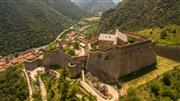
Patrimoine culturel
FORT LIBERIA DE VILLEFRANCHE-DE-CONFLENT
Last admission: one hour before closing time A perched sentinel overlooking Villefranche-de-Conflent, Fort Libéria is waiting to be discovered. This remarkable monument was built by Vauban in 1681 and fortified under Napoleon III (1850-1856). In an incomparable setting, you can wander along the ramparts, looking for soldiers hiding in the counterscarp galleries or those nasty poisoners hidden in some of the underground prisons. Other attractions include historical reconstructions (12 rooms), a chapel, a bread oven and gunboats. The Fort is linked to the medieval town of Villefranche-de-Conflent by a 765-step staircase. Access is possible on foot via a footpath (30-minute walk), via the underground passageway for the more courageous, or by 4 x 4 vehicle. While you wait for the real visit, take a virtual tour of Fort Libéria: https://visitezlepayscatalan.fr/fort-liberia/index.html Prices and times subject to change.
-
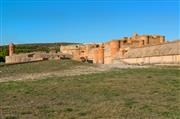
Patrimoine culturel
FORTERESSE DE SALSES
The fortress of Salses is a unique monument located on the border between France and Spain, at the crossroads of two eras, the Middle Ages and the modern era. At the beginning of the Renaissance, when the powers were clashing over Italian territory, Ferdinand II, King of Aragon, and Isabella the Catholic, Queen of Castile, had a fortress built between 1497 and 1503 on the border with the Kingdom of France. The fortress of Salses is a transitional structure between the medieval castle and the bastioned fort, capable of withstanding modern artillery. It was definitively conquered by the French in 1642, and the Treaty of the Pyrenees of 16 November 1659 confirmed the definitive attachment of Roussillon to France. Assigned to the Ministry of Culture since 1930, the building is managed by the Centre des monuments nationaux. Last tickets on sale 45 minutes before closing time for self-guided tours, 1 h 15 before closing time for guided tours.
-
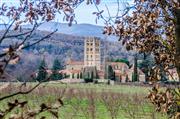
Patrimoine culturel
ABBAYE DE SAINT MICHEL DE CUXA
Set in a valley in the heart of the Romanesque Conflent region and at the foot of the Canigó mountain range, Saint-Michel Abbey is an exceptional architectural ensemble (10th-12th centuries) with its abbey church, one of the largest and most significant pre-Romanesque churches in Europe, its Romanesque Lombard bell tower, its crypt and its Romanesque cloister. It has been home to Benedictine monks since 878. Guided tours for individuals during the high season (April-September). Outside this period, guided tours only for announced groups. Individuals may join groups. High season: guided tours at 10am, 2.30pm and 4.15pm. Sundays: guided tours at 2.30pm and 4.15pm.
-
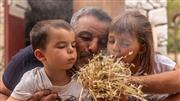
Patrimoine culturel
MUSEE DE PREHISTOIRE DE TAUTAVEL
The Musée de Tautavel European Centre for Prehistory is a complex built around the Man of Tautavel. It presents the entire history of mankind in Europe. It's just as famous for its rich collections as for the fun and cultural activities it offers throughout the year, enabling visitors to get to grips with the lives of their distant ancestors. Activities programme during the school holidays. In 2024, temporary exhibitions will be added to the Museum's cultural offering. The exhibitions are free of charge. A major exhibition from July to December in partnership with the Muséum National d'Histoire Naturelle "Art and Prehistory". A family journey into the past!
-
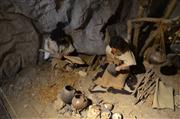
Patrimoine culturel
CHATEAU MUSEE DE BELESTA
Housed in a medieval castle, the Prehistory Museum recounts the life of the first breeders and farmers 6,000 years ago, based on archaeological finds in the Bélesta cave (ornaments, tools, weapons and pottery, some thirty of which are still intact). A new Charles Rennie Macintosh area presents the Scottish architect-designer and painter, who lived near Bélesta.
-
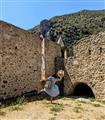
Patrimoine culturel
REMPARTS DE VILLEFRANCHE DE CONFLENT
Please note: Last admission: 1 hour before closing time Founded in 1092 by Count Guillaume Raymond de Cerdagne, in a strategic location in the Tet valley at the foot of the Canigó mountain, Villefranche has preserved intact its fortified walls, built between the 11th and 19th centuries. Take a tour of the interior and appreciate the ingenuity of the successive defensive systems. The strategic importance of the city, already recognised in the Middle Ages, was reinforced after the Treaty of the Pyrenees (1659), when Louis XIV commissioned Vauban to complete Villefranche's defences and turn it into a stronghold. July and August : Every Monday and Wednesday at 9pm: guided tour of the Lanterne. While you wait for the real tour, take a virtual tour of the ramparts and the city: https://www.visitezlepayscatalan.fr/villefranche-de-conflent/remparts.html https://visitezlepayscatalan.fr/villefranche-de-conflent/index.html
-

Patrimoine culturel
MAISON DU PATRIMOINE ET DE LA MEMOIRE ANDRE ABET (CIAP)
The "André Abet" House of Heritage and Memory in Saint Laurent de Cerdans: The memory of a know-how: espadrilles and Catalan weaving This place of collective memory is located within the walls of the "Union Sandalière", the former cooperative production factory (1923) of the Travailleurs Syndiqués, and today houses the reconstruction of an espadrille and weaving factory. You will also discover La Retirada, the memory of the exodus of Spanish Republicans who were welcomed in Saint Laurent de Cerdans in January and February 1939. 70,000 refugees passed through Saint Laurent, 5,000 of whom were accommodated on site, while the wounded and sick were housed on the 2nd floor of this building.
-

Patrimoine culturel
MANUFACTURE HENRI PRIVAT
Unique in France, visit the workshops of a genuine jewellery maker... During guided tours of this jeweller's house, which has been awarded the Entreprise du Patrimoine Vivant (Living Heritage Company) label, you'll discover a skill that is unique in the world, the workshops of Henri Privat, "Meilleur Ouvrier de France" (Best Craftsman in France), and the history of these authentic traditional Catalan garnet jewels. Guided tours all year round. Duration: 50 min.
-
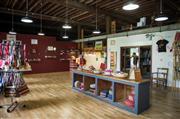
Patrimoine culturel
CREATION CATALANE
It was in the 19th century, in St Laurent de Cerdans, that the amazing story of the espadrille was born, the story of an ancestral craft that became a flourishing industry that supported an entire valley for almost a hundred years. Today, we make Catalan espadrilles known as "Vigatanes" (pronounced "bigatanes"). We've set up our workshop in an old espadrille factory that we've renovated and brought up to standard. We work mainly with the harmonious, contemporary colours of "Toiles du Soleil", bringing a modern touch to our creations while preserving the ancestral manufacturing process. The shop adjoining our workshop allows visitors to see the production process in real time. We also organise guided tours so that as many people as possible can discover our expertise.
 Welcome to
Welcome to